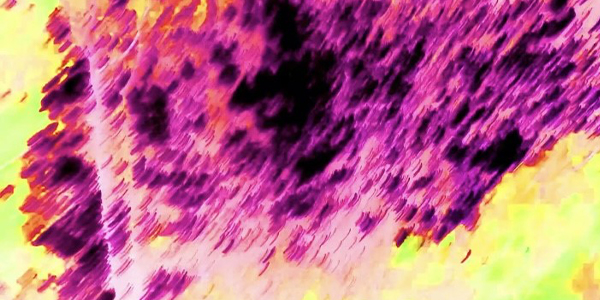VCU artists conclude interrupted Senior exhibits at Branch House

“Quality Time” running on the Cabell Screen until Aug. 20
Watch on the Cabell Library Ramcam at go.vcu.edu/cabellramcam
Quality Time, showing through Aug. 20 at The Branch Museum of Architecture and Design, brings together the diverse work of 10 young Virginia Commonwealth University alumni. As many people across the globe experienced in 2020, this group of artists was separated without warning. The conclusion of their college careers didn’t quite feel like an end and all plans went awry. This exhibition marks the reunion of these artists.
Quality Time brings together a variety of artists with equally diverse experiences reflected in their art ranging from paintings to sculptures and books to video.
Exhibiting Artists:
Malia Bates
Malia Bates creates sculptures, print media, and video installations that explore their relationship with Korean American culture and their birth family. For Bates, their DNA sequence is a form of communication with their ancestors – individuals they will never know, yet have a connection to. They do not have knowledge of their birth family’s history and culture. Instead, they weave their personal experiences with scientific and cultural research to create a deeply personal mythology. Bates brings traditional Korean folklore into a contemporary context, adding to and twisting it to reflect their view of the Korean American experience as a transracial adoptee.
Meera Brown
Coercing Luminescence is Brown’s most recent work, investigating how personal sacred spaces are created and how light, in its many forms, nurtures us.
Noel Elias
Sasha Ercole
Open Circuit consists of acrylic wall signage distributed throughout the museum, occupying standardized traffic sites. By appropriating coded design, language acts as a disruption, highlighting how movement is affected by architectural boundaries within public spaces. Through poetics these works aim to develop a vocabulary of fluidity, legibility, and opacity.
Colin Gallagher
White Heat explores the unlimited power of the sublime and its ability to tear into human life. Using nature as a portal, White Heat brings the viewer into a world of inverse and recoil, exposing an uncomfortable reality that acts casually but exists subliminally. This focus is brought to its heights through Gallagher’s sound work, pulling the listener into a tense and wailing sound scape. The term “White Heat” is from French philosopher George Bataille, meaning “the blind moment when eroticism attains its ultimate intensity.”
Madison Hansen
The works present private narratives, such as focusing on tactics to solve a problem or care for an object. Often, care is incorrectly applied, which Hansen illustrates in displays like using a band-aid to fix a crack in the concrete. Common yet provoking thematic sources aid the conversation about false, forced, and constructive nurturing. Hansen’s process directly reflects the nurture she has given, received, and observed. She creates with care and intention while discussing the problems behind giving and nurture.
Caroline Meyers
Pipilott’s Ghost is a body-swap comedy and fake interview with the artist Pipilotti Rist presented in the format of a stage play and distributed like a zine. The publication was created as part of a remote residency with Mutual Stores in Oakland, CA, facilitated by Rosa Novak and Brendan Page. It features 3D-rendered illustrations by Kayleigh Conroy.
Samuel Richardson
Dabbling between painting, drawing, and sculpture, and his new found hunger for interior design, Richardson’s current work is a product from technical elements that each practice possesses. The Kitchen series was kicked off in 2017 as a bright representation of common interiors, but didn’t make a collective debut until mid-2020, reflecting the heightened apprehension of society’s future. Richard son’s paper works portray the chaotic collectivity of recycled imagery, drawing from his assortment of rendering techniques and aesthetics.
Elio Yves
One Second on the Sun is a series of three individual bronze castings. In their making, these abstract bodies have travelled from plaster template to bronze into 3D print then to wax pattern and back to bronze again. Their shapes as well as their material history echo landscapes, caves, plateaus, and topography lines like geological lamination. By addressing gaps in time, knowledge, and experience, these works represent omission, whether by a rift exposing the hollow core or by the smoothing and polishing of an outermost face. Through a nearly timeless material—bronze—One Second on the Sun questions chronology, origin, and absence.
Categories Branch House, Community, Student Work